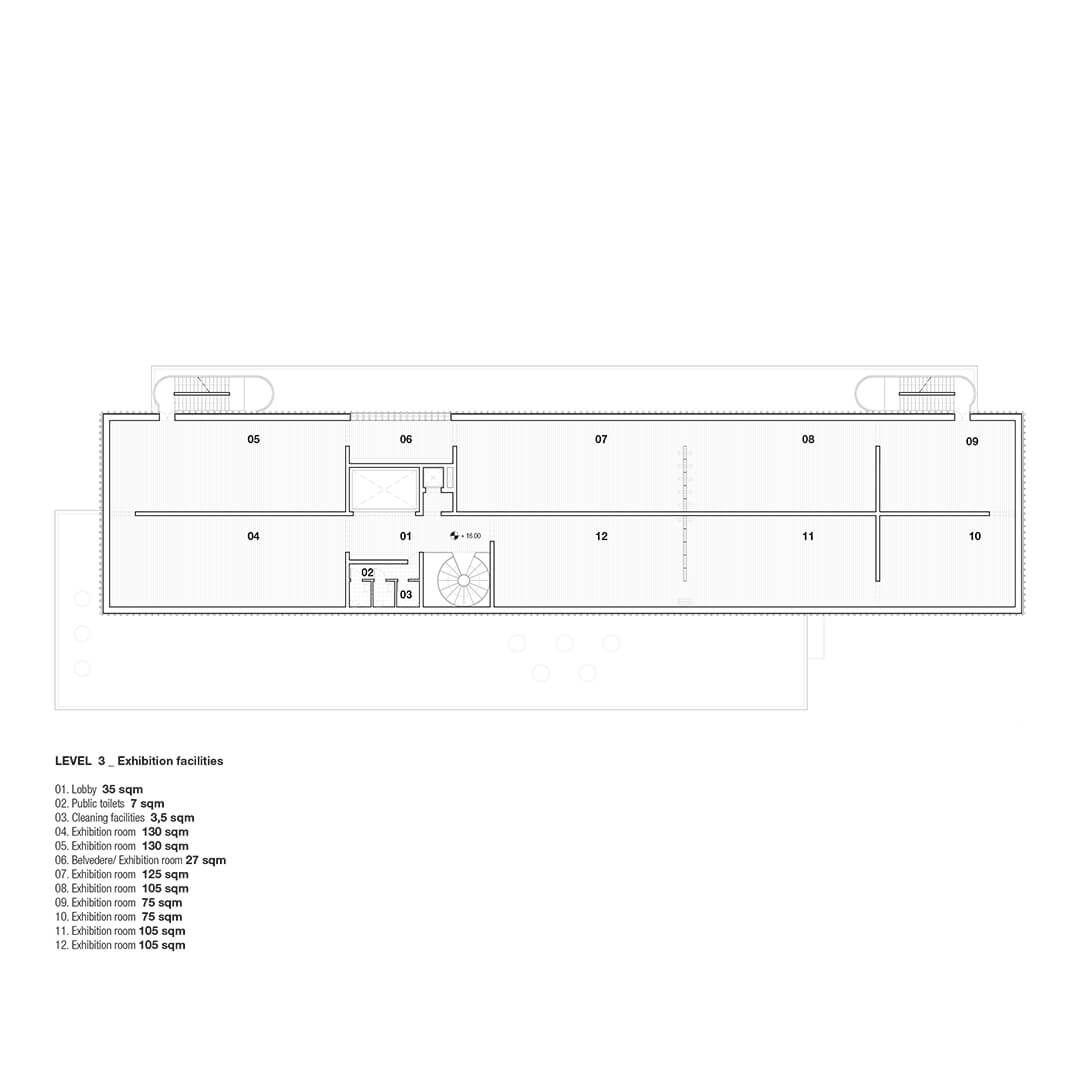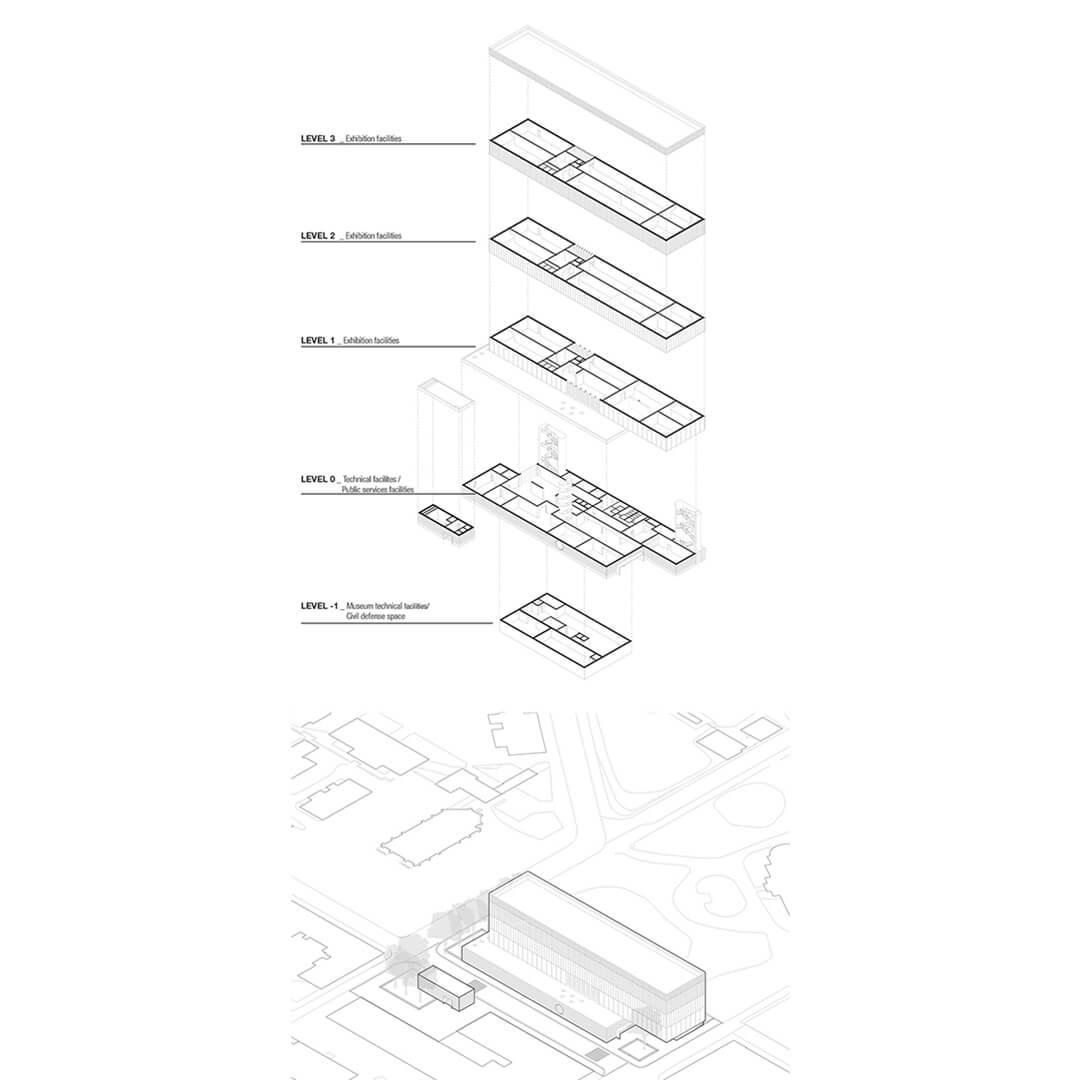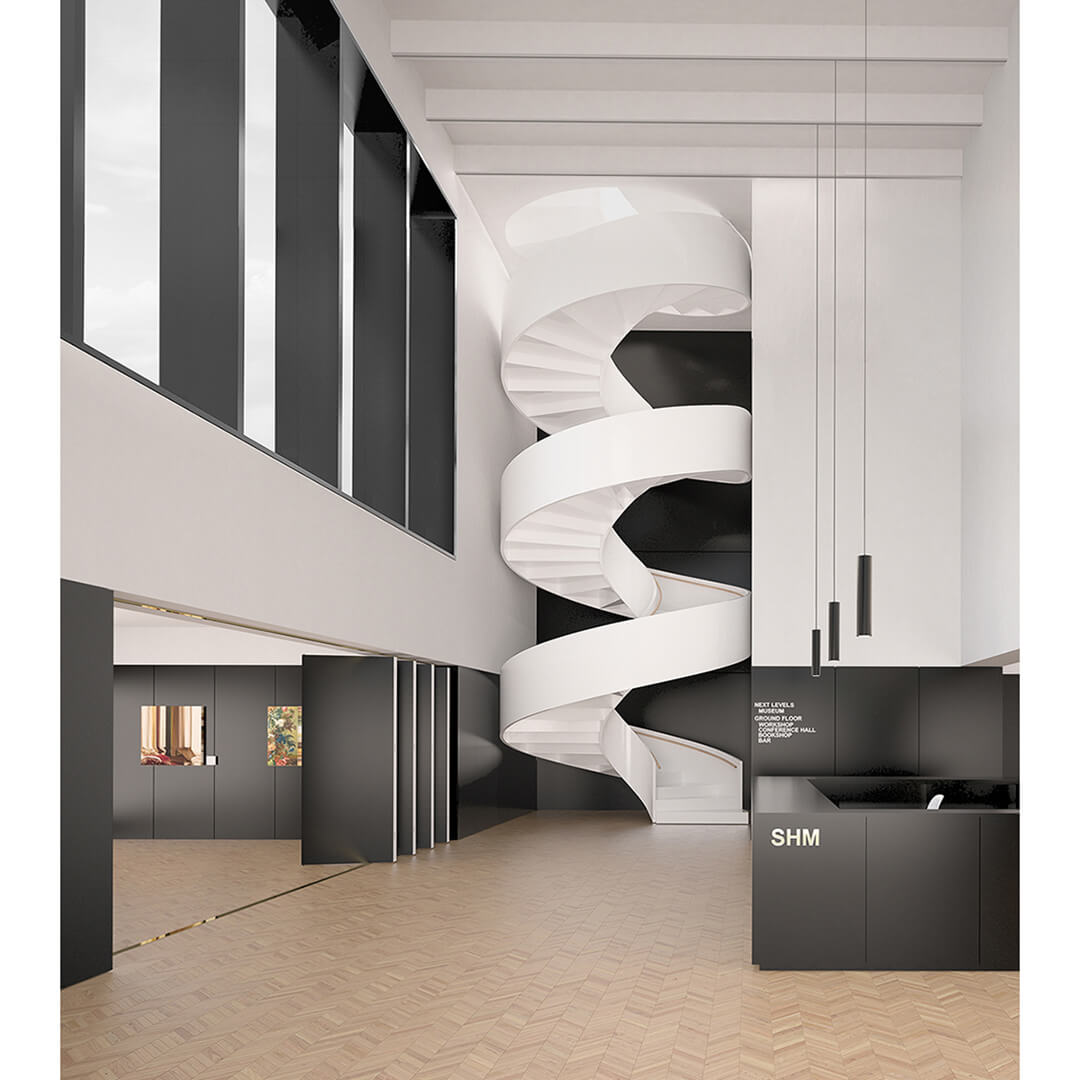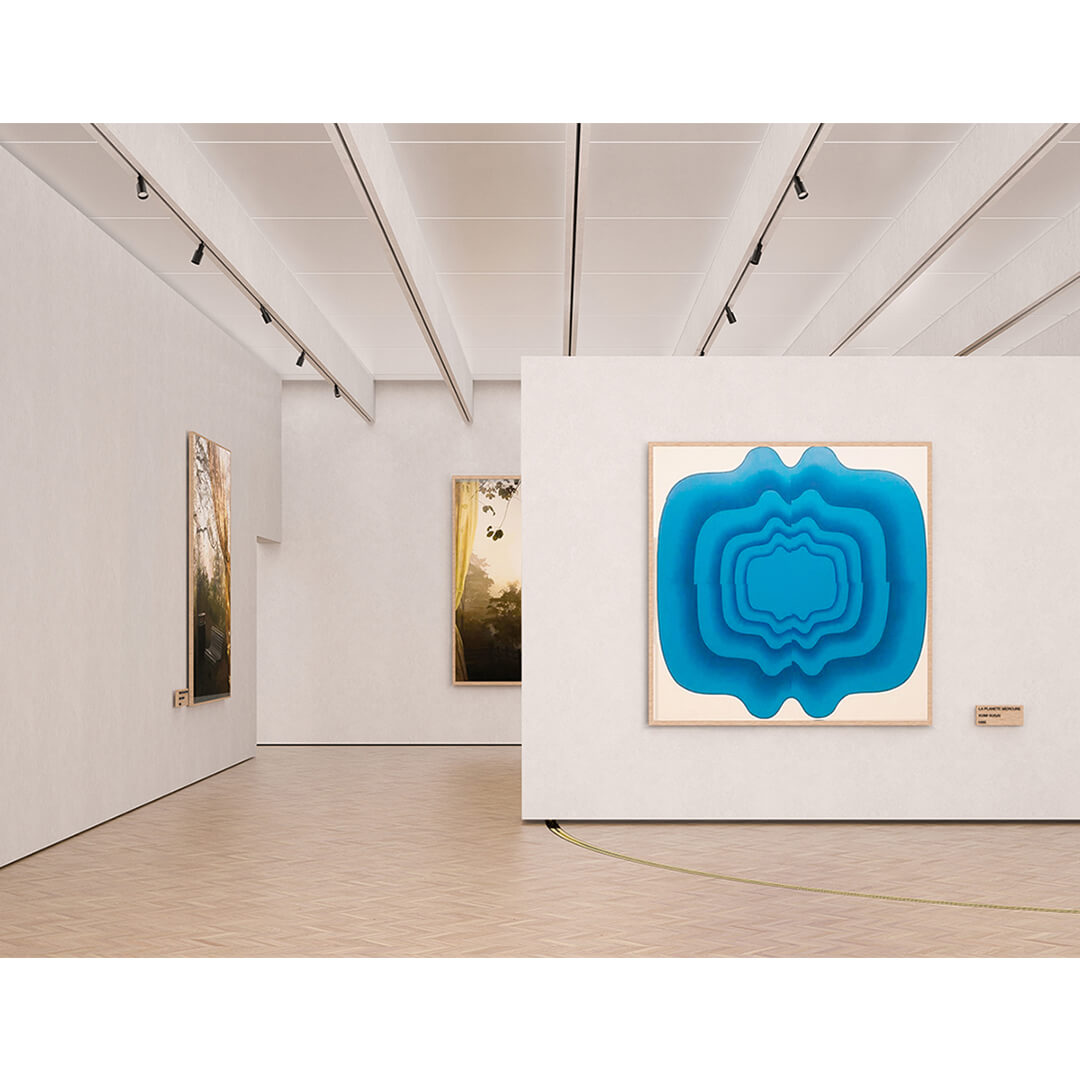Vito Distante+Alessandro Ghizzani+Fiamma Leoncini+Francesco Martella
The building for the new Sara Hildén Art Museum fits into the context of the former Finlayson factory with the desire to be a usual presence though it denounces that it is the last piece of the urban history of the neighborhood.
The new Sara Hildén Art Museum consists of two main elements: a podium cladded with grey brick that anchors the building to the ground but, at the same time, makes it permeable to the city, and the monolith above with black metal panel cladding, which conceals the contemporary art treasures of the collection. This superimposition of two different volumes is emphasized by their offset and by the overhanging at the entrance and reflects the aim to showcase the “display casket” while maintaining a simple expressive language and a sobriety of the architectural lines. The uniform podium, which houses both public and technical facilities, the latter related to the management of the whole building, has two breaks that clearly identify two accesses. The western one is a service access and brings into the loading space for artworks – it’s in connection with storage and study areas. The artwork storage is located in the basement for security reason and to take it apart from the technical areas with more traffic of people.
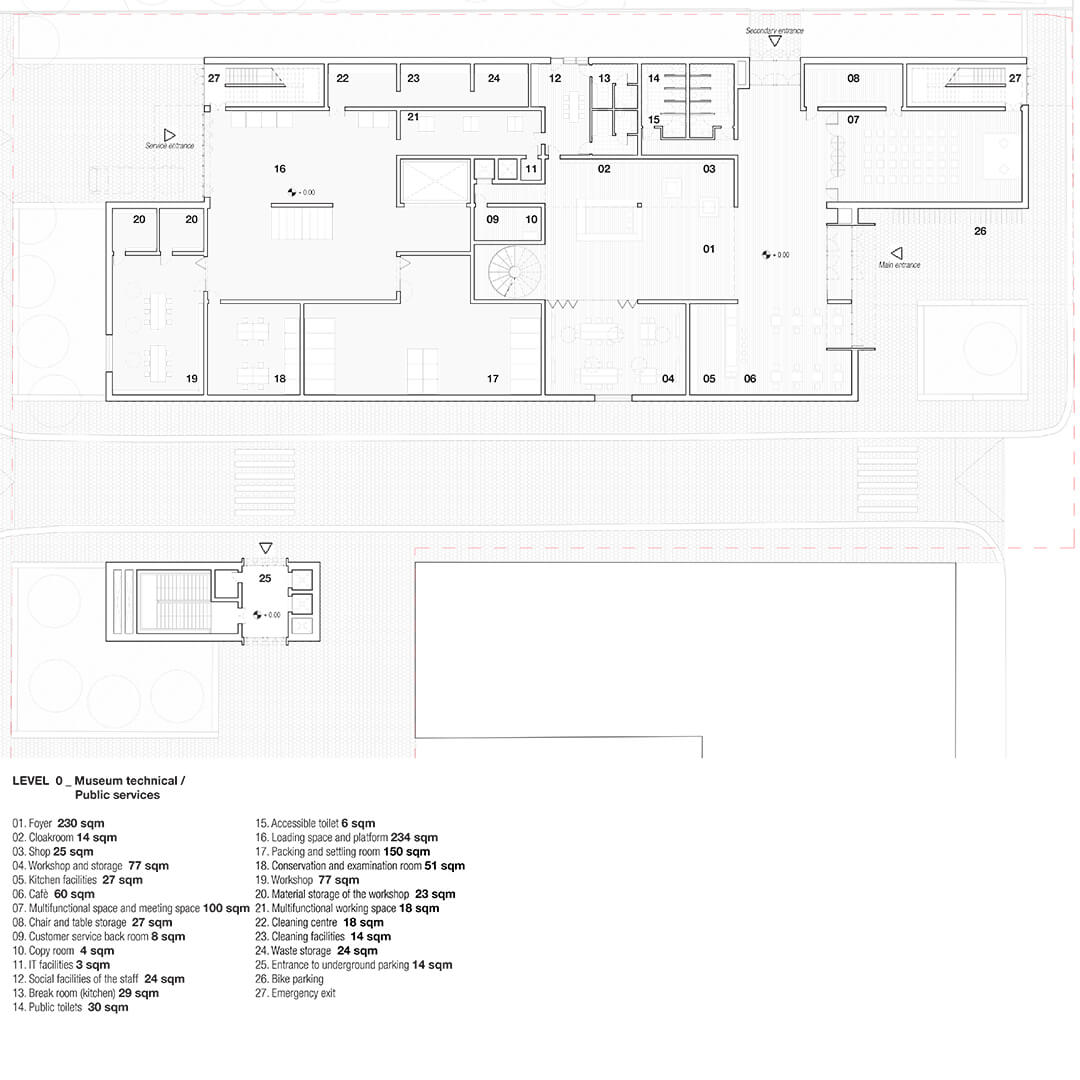
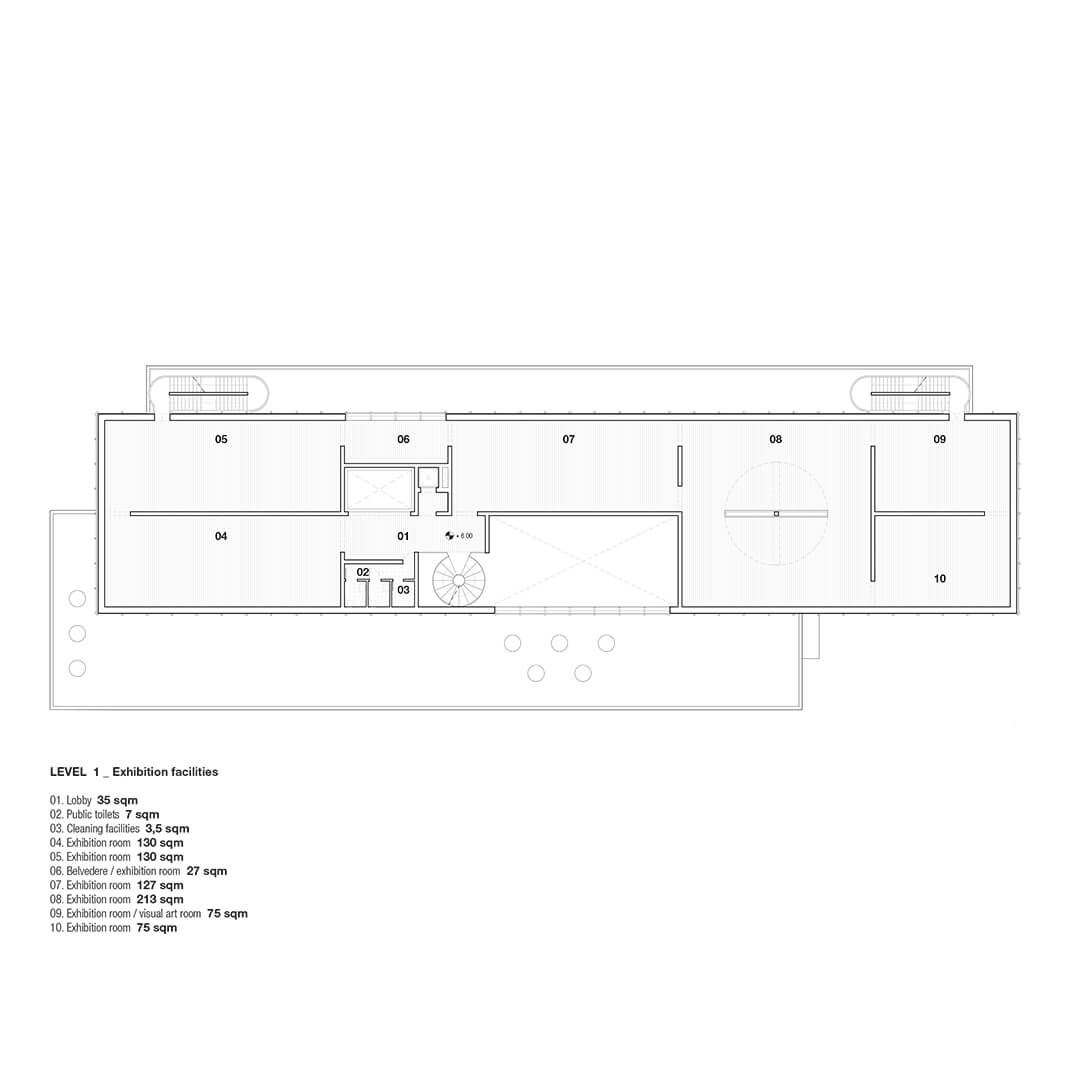

On Finlayson street, on the other hand, the brick podium is the final destination of the pedestrian path that starts from former factory’s gate and crosses the district that has become an art factory: a partially covered small piazza – a quiet place to rest and socialization – brings to the foyer through a golden portal. Once this threshold has been crossed the visitor finds himself in a centrifugal space that connects all the main areas and that has his center of gravity in the double-height hall; the helical staircase acts as perspective focus for this space and emphasizes its vertical progression. The foyer follows two main orthogonal axis: the first crosses the double-height hall and leads to the vertical distribution and then to the exhibition rooms, the second has the Wilhelm von Nottbeckin Park as its background and mainly serves the multipurpose hall. In this way all the public functions and facilities (workshop, café, multifunctional hall) remain distinct while being part of a fluid system that connects them to each other and to the double-height atrium. The connection and permeability among public facilities are also highlighted by the sliding panels that configure the space according to needs. Café and multifunctional room are designed to work independently from the museum as well. Going up the spiral staircase you may have different views of the neighborhood through the large window that illuminate the foyer. This window fits in the grid of the metal facade cladding of the upper volume. Watching life go by as you approach the artworks on display reminds us how much this institution is linked to the city of Tampere and how much art is linked to life. Exhibition floors are arranged according to a regular grid of rectangular rooms with a circular path that begins and ends in the staircase and lift’s lobby. The exhibition rooms have a wooden floor, establishing a palette continuity with the foyer, and white painted walls to hang artworks. Ceilings, on the other hand, have a series of fake joists that work as support for lighting track and A/C diffuser. Between the joists a backlit opaque glass plate helps to illuminate and characterize the rooms.
At each exhibition floor the circular path takes a break with a moment of rest, the only area illuminated with natural lights, which allows visitors to enjoy the view of von Nottbeckin Park, Finlayson Palace, Tammerkoski rapids and Lake Näsijärvi. The collection is organized on three floors. Each floor has rooms with flexible set-up due to movable and pivoting walls that enlarge or reduce the space. To place the building on the given plot it was necessary to remove the trees along Finlayson street; they where replaced on the opposite side of the street near the exit of the underground car parking.
The small building of the entrance to the P-Kunkku underground car parking closes the clearing in the southern side of the plot and is aligned with the street front of former factory’s headquarters. The architectural language of the exit of underground car parking and the museum are the same and makes this small building look like a grey brick parallelepiped with two golden portals to mark its presence. The external paved parts are in Finnish Kuru Grey granite small blocks and, both close to the museum and the entrance to the underground car parking, they are cut out by large flowerbeds that are aligned with the new buildings and are planted with rowan bushes. The flowerbed in front of the museum and café entrance has, in the design of the curbs, two seats made of simple granite blocks. Public facilities on the ground floor have a wooden flooring to warm and enrich their colour palette, while the flooring of the technical facilities and the artwork storage is made of concrete to have less wear. The material palette of the proposed design is linked to the traditional architecture of the town and to the industrial character of the district while reinterpreting them: the lower building has a grey brick cladding on a solid plinth of Kuru Grey granite while the higher building of the exhibition rooms has a black metal cladding arranged with a regular design on three lines with crowning element. The rhythm of the panels become denser as the facade rise and, the vertical lines reminds the tight rhythm of the windows of the surroundings and the neo-Gothic Buildings of the district.
Authors: Vito Distante+Alessandro Ghizzani+Fiamma Leoncini+Francesco Martella.
Location: Tampere, Finland.
Year: 2021
Competition: Architectural Competition for the Sara Hilden Art Museum.



